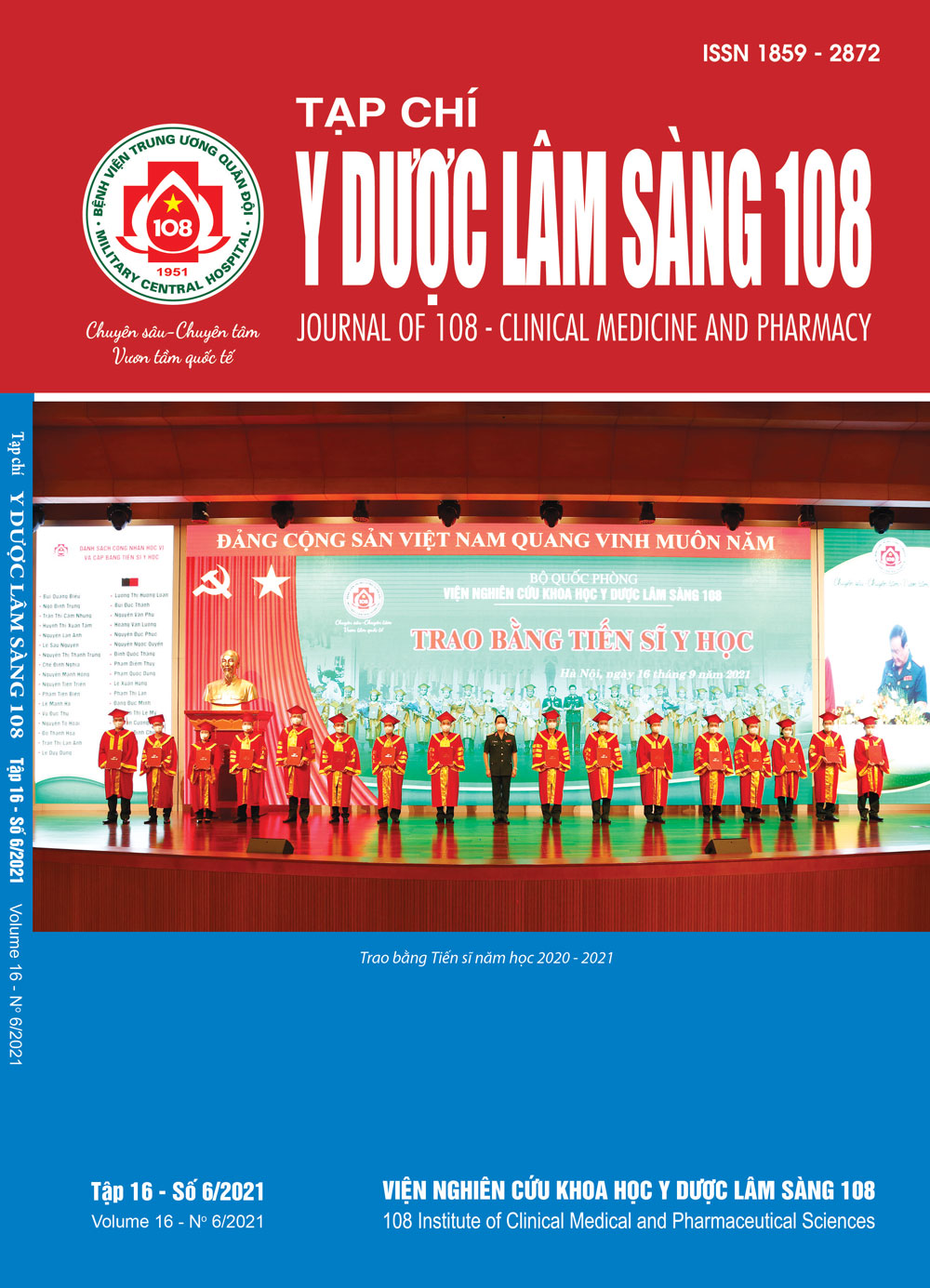Complications of phacotrabeculectomy for unresponsive acute primary angle closure glaucoma with cataract
Main Article Content
Keywords
Abstract
Objective: To evaluate the complications of phacoemulsification-goniosynechialysis for unresponsive acute PACG with cataract. Subject and method: 45 eligible eyes were recruited into the study from 3 centers Vietnam National Eye Hospital, Ha Dong Eye Hospital and Eye Department of 103 Military Hospital from 1/2018 to 11/2019. In this prospective interventional study, all eyes were treated with phacoemulsification-goniosynechialysis and followed for 1 year. Result: General result was relatively good with IOP complete success of 100%. Intraoperative incidents rate was low (5/45 - 11.11%) only hyphema. The rate of postoperative complications was 12/45 cases (26.67%) which was usually transient without significant sequalae. Anterior uveitis rate was higher in group of high IOP (> 40mmHg) (p<0.001, test Chi-square). Corneal edema rate was higher in group of shallow anterior chamber depth (p=0.02, test Chi-square), time of process (p=0.04, test Chi-square). Miotic was more frequent in group of high IOP (> 40mmHg) (p<0.001, test Chi-square). Conclusion: Phacoemulsification-goniosynechialysis proved to be relatively safe in treating unresponsive acute PACG with cataract.
Article Details
References
2. Husain R et al (2019) Efficacy of phacoemulsification alone vs phacoemulsification with goniosynechialysis in patients with primary angle-closure disease: A randomized clinical trial. JAMA Ophthalmol 137(10): 1107-1113.
3. Kameda T et al (2013) Long-term efficacy of goniosynechialysis combined with phacoemulsification for primary angle closure. Graefe's Archive for Clinical and Experimental Ophthalmology 251(3): 825-830.
4. Nguyen N et al (2011) A high prevalence of occludable angles in a Vietnamese population. Ophthalmology. Opthalmology 103(9): 1426-1431.
5. Nongpiur ME, Ku JY, Aung T (2011) Angle closure glaucoma: A mechanistic review. Curr Opin Ophthalmol 22: 96-101.
6. Tanihara H et al (1992) Surgical results and complications of goniosynechialysis. Graefe's archive for clinical and experimental ophthalmology 230(4): 309-313.
7. Wang N et al (2019) Phacoemulsification with or without goniosynechialysis for angle-closure glaucoma: A global Meta-analysis based on randomized controlled trials. Int J Ophthalmol 12(5): 826-833.
8. Wang N, Ouyang J, Zhou W, Lai M, Ye T, et al (2000) Multiple patterns of angle closure mechanisms in primary angle closure glaucoma in Chinese. Zhonghua Yan Ke Za Zhi 36: 46-51.
 ISSN: 1859 - 2872
ISSN: 1859 - 2872
